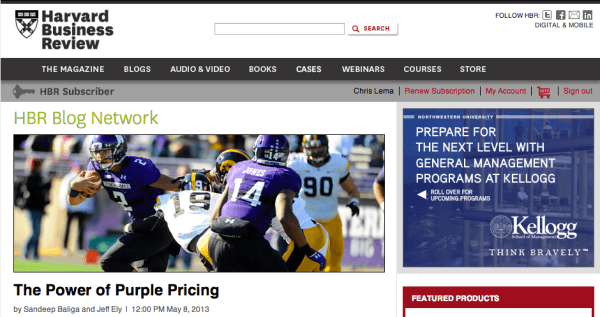 I love reading about pricing research. It's the stuff you tend to ignore until you're looking for it, but that's why I use Google Alerts to help me find articles I may have missed and put it into my queue for later reading.
I love reading about pricing research. It's the stuff you tend to ignore until you're looking for it, but that's why I use Google Alerts to help me find articles I may have missed and put it into my queue for later reading.
Tonight I read an article from mid May, which makes me wonder how I missed it. But I'm glad I found it. Before I share the link with you, let me give you the context for the article.
Optimal pricing
I get the question a lot about how to determine an optimal price. It's one of those magical part-psychology, part-magic, part-scientific strategy topics that leaves you always thinking someone else knows more than you (which is likely true) and that you may never get it right (with is not necessarily true).
Now not all products or services have the same pricing challenges. But certain pricing is tough and pushes you to work hard—especially if you don't want to use historical data to find the optimal price.
So this article appeals to me because it solves a rather challenging dynamic—where demand is in flux over time, where you have a desire for maximum sales, where revenue maximization is also a goal (which isn't the same as maximized sales), and where you have a limit or fixed amount of your sales item.
In other words, this is great for event ticket prices, airline seats, etc. Fixed spots, maximum revenue, and you care that most of the seats are filled (because your event will look weird if you maximized ticket profit but had 70% of the seats left empty).
A Dutch Auction
The trick that professors at Northwestern University used was a dutch auction.
They set a price at their max and then slowly decided when they would bring the price down. They could bring it down over time, so that they'd capture every person at the price point that the person was comfortable with.
Where they added a twist was in guaranteeing a refund if the final ticket price was lower than what someone had paid for—meaning that early folks who were willing to pay higher amounts were protected if the price dropped.
But it also means that the organization could calculate the exact amount they'd be paying out, if they wanted to lower it—helping them compare increased revenue from higher demand at a lower price, with the refund value they'd have to put out.
In a word, ingenious. But I don't want to tell their story, I just want to point you to it.
